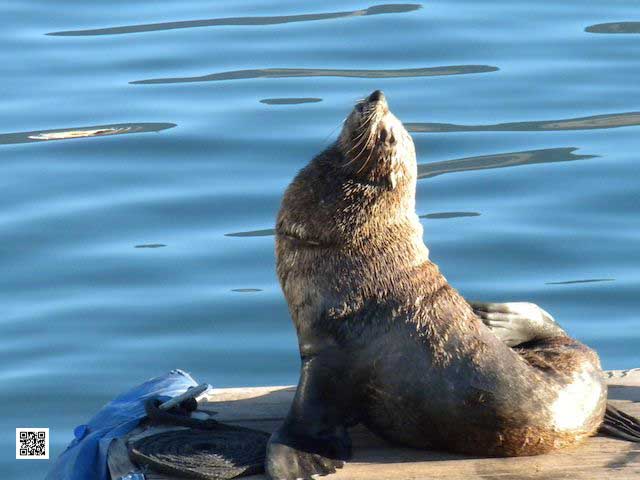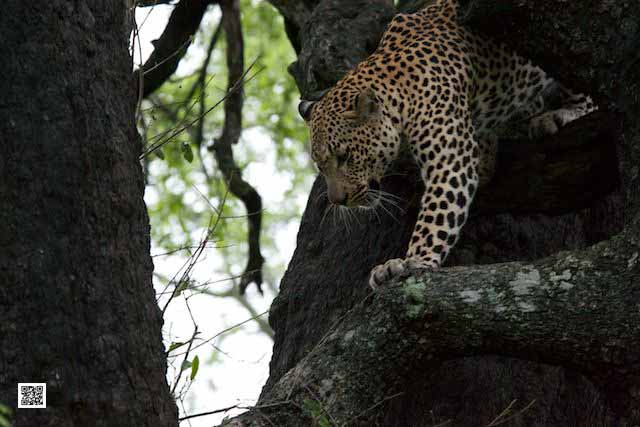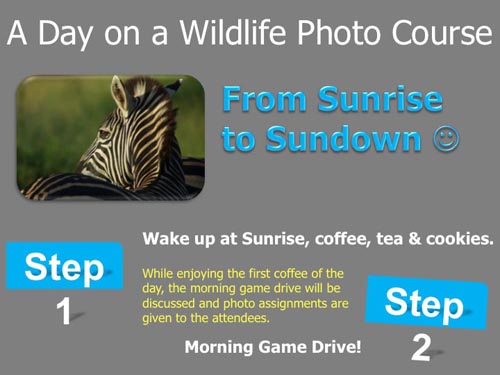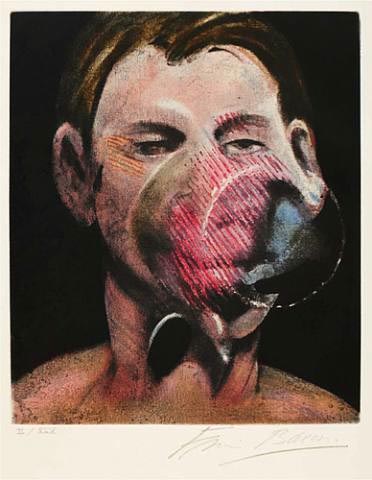09 September 2012
Photo Safari in the Serengeti: A Day with Lions
15/09/12 11:19 Filed in: Photo Safari | Travel & Inspiration

It was in the Serengeti when a pride of lion was lying in the grass, cubs playing and the females keeping an eye on the plains. This is just that incredible thing in the Serengeti that you can overlook the entire area and not only the lion can, also the photographer when looking out for photographic opportunities on a photo safari.
We spotted the lion on a morning game drive and while watching and photographing them a herd of zebra approached. That was promising. Maybe we could witness a hunt! We retreated a bit from the scene to not disturb the animals and waited. The zebra herd was lead by a stallion. He walked in front of them scanning the area, head up and alert. The lion pride had disappeared from earth as soon as they saw the zebras approaching. They were all down in the grass, no movement nothing at all to see of them. Nonetheless the leading zebra stopped about 60 meters away from the pride. The rest of the zebra herd just carried on grazing, but stayed behind the stallion, some of them even playing. The stallion and the herd stood there for at least 10 minutes and just at the moment that the stallion was about to carry on the big male lion of the pride popped up his head. He had been sleeping away from the females and cubs in the grass and had just woken up, wondering where his females are. When the stallion saw he male lion he stopped again, looked at him and them turned around and walked away where he came from. The herd followed him. There was no fast movement of any zebra, no panic, nothing and there was not attack of the lion. The females popped up their heads when the zebras had turned and walked away. Only one sub adult female an after the zebra, but only for a short distance. Nobody joint her. The lionesses are too wise to waste any energy. They knew they wouldn’t have a chance to catch a zebra, so they just carried on with what they were doing before the zebras arrived.
This was an incredible sighting and we decided to stay with them, but move away for now to have some breakfast at a nearby rock. While having breakfast we saw that a buffalo heard was approaching the lion pride and the buffalos had a completely different strategy than the zebras. They had seen the lion and they immediately started attacking them, because they wanted access to a nearby water whole (probably the zebras also wanted to get to the water whole, but they do not have the strength of buffalos). The buffalo’s lion chase made that the pride was scattered over the whole area, which makes the weak. After a few moments also the lion seemed to realize that and organized themselves again. The buffalos were at the water whole drinking. The lion let their cubs under a distant group of trees and each lioness and young male lion took position on a termite mount. They set up an ambush for the buffalos for when they would leave the water whole. Ambush in this case meant that the lion had positioned themselves to take advantage of a hunting chance, but they were completely visible on the termite mounts. They were waiting. After quite a while the buffalos started moving off, but unfortunately for the lion in the wrong direction away from their positions. The lion left their termite mounts and met with the cubs under the trees. All were lying down in the grass again, again not wasting any energy.
Later on in the afternoon, still at the same spot and still lying in the shade and the cubs playing, a heard of elephants approached. And also the elephants made clear that they don’t want the lion around and chased them away. The lion moved off and lied down in the grass away from the elephants. They knew there was no hunting opportunity and again they saved their energy for better opportunities probably occurring during the night.
Being able to follow the lions throughout the day, well actually being with them the whole day in the same spot, was a great photographic opportunity and also a great learning experience from the photographic point of view and animal behavior point of view. They are so much wiser than we are … well probably except that male lion.
Ute Sonnenberg for www.rohoyachui.com
Photography is Visual Poetry
14/09/12 10:34 Filed in: Photography & Art

Poetry is something beautiful, but unfortunately not all of us are able to wield words in a way that they fall into poems. Yet we all got poetry in us and we all can press a shutter to create visual poems. Words unfold by looking at an image and a poem takes shape and we all understand without any actual word.
What would be the seal’s poem?
Ute Sonnenberg for www.rohoyachui.com
Photography Genre Philosophy
13/09/12 15:15 Filed in: Photography & Art

We know several genres of photography like editorial, nature, landscape, wildlife, fashion, interior, photo journalism and more, yet there is one that comes back in all of them and is one of its own, the photography genre philosophy.
The photography genre philosophy is determent by the depth of thought, the depth of consciousness and the depth of connection. It includes also images that might under different criteria be considered as not perfect, yet one gets drawn into them. There is no wrong or right, all is relative, all authentic. The images visualize the underlying dimensions of the moment, allowing viewers to tap into non-physical levels as thoughts and emotions.
Reading images that way makes them a powerful tool for all kinds of purposes and the photography genre philosophy “The Glass Bead Game” (Herman Hesse) of photography.
Ute Sonnenberg for www.rohoyachui.com
Visualization: Businesses utilizing Photography for Communication
12/09/12 08:55 Filed in: B2B | Photography & Art

How often does it happen that we talk to somebody and can’t get our message through to be understood? How often are we saying something and the person who listens hears something completely different? You might know the old game of whispering something in somebody’s ear and this person whispers it into the next person’s ear and at the end of the chain of people the message isn’t at all what it was in the beginning. Talking is such a poor communication tool
Poor communication can lead to difficult situations in personal life and in business. Especially in business with work teams of completely different personalities and backgrounds, communication can be a real challenge. It starts already with getting to know each other. How would it be, if we just could let images speak for us and tell our colleagues who we are and what we need to be happy at our work place? Photography visualizes what we try to tell and everyone can understand it. Even uneasy situations of “how to tell my colleague that I need some silent moments to focus on my work” can be visualized and will not be experienced offensive by others.
Photography is the easy access key to visualization of about everything for easy and clear communication in business and at home.
Try it
Ute Sonnenberg for www.rohoyachui.com
How to make an Infographic

In case you are wondering how people make these awesome infographics you can see on Pinterest and other social media, here are a template, an example and a guide how to do them.

The template is from Hubspot and available here. And a step by step Snapguide can help you to get it easily done.
Enjoy making your own awesome infographics and get your message out.
Ute Sonnenberg for www.rohoyachui.com
Peter Beard & Francis Bacon - Photographer and Painter
10/09/12 19:26 Filed in: Photography & Art

“Sometimes there is nothing better than a bad exposure.” said Peter Beard about photography during an interview with Steven M.L. Aronson and he meant to explain that lots of his photographs happened just by accident, and he was hoping for really good accidents and it turns out his photography is really great.
Beard studied art history at Yale and took color courses with Josef Albers, Neil Williver and Al Katz, but as he says, Richard Lindner and Francis Bacon were his real art teachers later in life.
Peter Beard met Francis Bacon at a presentation of his book “The End of the Game” in London. Bacon had just purchased the book and invited Beard immediately into his studio. Beard took polaroid photos of Bacon’s work. The polaroids became a source of inspiration for Bacon regarding colors and shapes in his paintings and in return Beard learned from Bacon essential things like looking at old masters to learn about light and composition.
A friendship had developed and Bacon painted Beard several times. I dare to say that Bacon’s way of seeing art, reflects in Beards work and is one of the reasons of the mesmerizing impact Beard’s artwork has.
Read more in Peter Beard Trade Edition, available at Taschen and get insights in this creative friendship of two amazing artists.
Image above via HH Fine Art.
Ute Sonnenberg for www.rohoaychui.com
Travel Memories 2008: On Safari in Africa - Day 2
09/09/12 18:26 Filed in: Travel & Inspiration | Photography & Art

It was a good first night in the bush. The sleeping bag I had brought with me was to warm, but that was little concern. Everything else was fine. It hadn’t rained that night, so the tent was dry too.
We got up at 6 a.m. and had a quick breakfast. We planned to stay in the bush for the whole day to see a crossing at the Mara River and it’s quite a long drive to get there. Alex made us a packed lunch and we were off.
We drove to a part of the river where wildebeest had been seen and that meant there could be a crossing. Very few vehicles were waiting in a safe distance from the river to give the animals the space to gather together and get ready to go. It’s all about patience. They start moving and everybody gets excited and then they change directions and the waiting starts again. After a while we thought, just let’s try another usual crossing spot and we headed further up the river.
On our way we heard about a leopard in a tree and we went there first. A female leopard had a kill and was feeding on it. Only three other vehicles where there and it was a relaxed sighting. The female was a bit restless and annoyed by birds that were shouting at her. She went off and on the tree, getting a drink and thinking what to do next. She decided to stay in the tree and to have a nap. The birds carried on with their noise and her ears were flat in annoyance. We enjoyed being with her for hours. The other vehicles had gone to their lodges for breakfast and we stayed alone with her, enduring the increasing heat and the camera always ready in case she was going to move.
Our only source of electricity during the safari (also in the camps) was the vehicle. An inverter transformed the power from the cigarette lighter into power to recharge the laptop and batteries. That meant one had to be very conscious about using battery powered equipment. When and for how long do I need the laptop? When can I recharge the laptop again? The laptop couldn’t be recharged while being in use and only when the vehicle was driving or the vehicle’s battery was full after a longer drive. It would drain to much power from the vehicle’s battery and the inverter switched off automatically when it became critical. For that reason any chance of battery power had to be used wisely. That made me setting up “office” while we were with the leopard. A couple of memory cards were already full and it wasn’t even lunchtime. I had to upload them to the laptop. So while I watched her and had the camera ready to shoot, the laptop was running and the processing had to be watched too. I was tired by noon. We decided to leave her alone and carried on to the river.
Paul and I had different opinions on where a crossing would be possible. I thought let’s go to the main crossing where they usually gather and he thought let’s check first other possibilities. So we first checked on other spots and got to the main crossing as the last option. There were probably about 12 vehicles and they had the good news for us: just half an hour ago about a thousand wildebeest had crossed. We stayed to watch the last 5 or 6 to cross the river and Paul became cross with himself. It made no sense to get angry. It was gone and that’s just how it is with looking for wildlife interactions, you never know for sure what and where it’s going to happen. It’s on their terms.
We started heading back to the camp, a long drive and a thunderstorm building up at the horizon. It started bucketing in an instant. You could hardly see the road and Paul got nervous. He told me later that he panicked a bit, because the road had a couple of deep dips and getting stuck was the last thing you want. When the rain stopped we were on safe roads and were rewarded with the sighting of a big pride of lions. The light just after the rain was soft. The playing cubs and mums looked smooth. A serene scene of family life.
From the lions it was just a short drive to our camp. It was about 6 p.m. when we arrived and still raining there. I fetched toilet paper and dried my tent, organized the luggage that I could remove it easily if it would start raining hard at night, had a shower, a quiet dinner and wanted nothing more than to sleep. I was so tired.
Ute Sonnenberg for www.rohoyachui.com